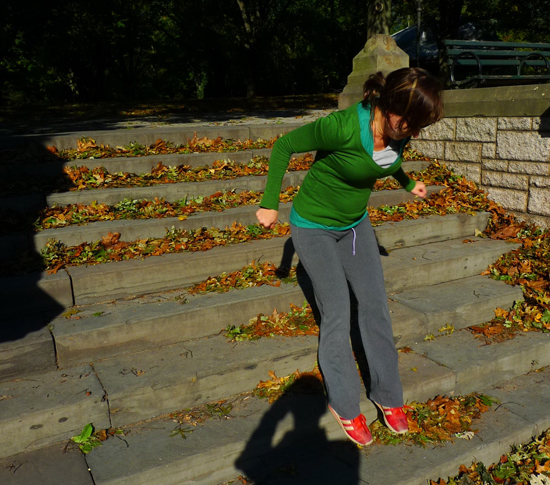All Over the Place
Posted on December 10, 2010 | posted by:Since my arrival to the city four months ago, I have often been at a loss to as to how to try to understand and locate myself within this new urban space. Perhaps it has been the relentless studying of theories of systems, or hearing the many musings about worlds of the artificial or a combination of the two that populated my mind with a previous lecture-demonstration of Parkour I witnessed two years ago. Parkour’s reputation will precede it in many circles: some call it part extreme sport, some say meditative pursuit. In an effort to research the practice firsthand, I enrolled in a class.

Everything you may have heard about Parkour is true: the grueling physical discipline in regards to balance, control, coordination and spatial awareness; and the strange way it forces you to overcome obstacles and adapt to the environment through the mind vis-a-vis your body. Through the act of performing the drills, I began to understand the dialectical relationship between the built environment and the body. The practice centers on engaging the body with both natural and dense urban obstacles. Through this navigation the practitioner recombines movement and architectural debris in a way that may create new meanings and imaginings of pathways through the city. The typical uses of the space become reframed, rearticulated and repurposed. Im interested in how the practice of Parkour re-imagines the implied roles and functions of architecture and space.
Transforming the city this way is less about physically transforming it and more about changing the way it is seen and used. Parkour offers the tools to personalize and experience the city. The movements (jumps, vaults, running and swinging) enable a practitioner to find their own way through adaptation and experience. The repurposing of urban artifacts will also complicate the socio-spatial practices, normative meaning and shared sense of the space. A wall once used as a barricade, then used as a vault, will become something else once it begins to be used in the new way. An obstacle is no longer an obstacle, it is only texture of the terrain and is passable. The strength and adaptability provided by the training will lead to creating new experiences and discoveries about the environment and about the self; perhaps a freer relationship to the environment.
Architecture’s pursuits are driven by human activities. Because of Parkour’s popularity, some architects have begun to consider the practice when developing new spaces. Creating a parkour-like experience for a mass audience could include scalable walls or areas to jump. Oddly, I’m quite torn in regards to the appropriation of a once marginal activity to the mainstream. My questions are mostly centered around the purpose of the appropriation… is it a trend or are their greater implications to these sorts of additions? Appropriation of military movements in a greater context? The language of movies and games become a reality?
